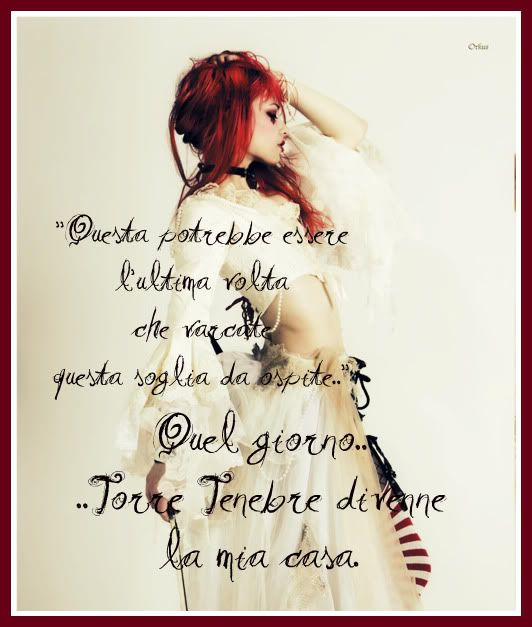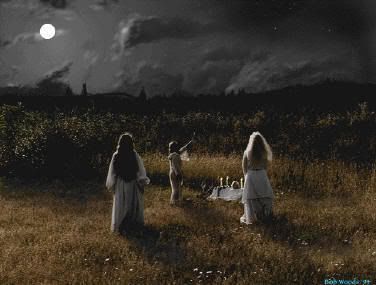Tales of Halloween | Full Movie | Awesome Horror Anthology | Greg Grunberg | Halloween 2022
Movie Central
3.48M subscribers
75,207 views Oct 21, 2022
Tales of Halloween - Ten stories from horror's top directors. Ghosts, ghouls, monsters, and the devil delight in terrorizing unsuspecting residents of a suburban neighborhood on Halloween night.
2015. Stars: Greg Grunberg, Adrienne Barbeau(voice), Hunter Smit, Barry Bostwick, Cameron Easton
*************************
'All Hallows' Eve'
The pumpkin grinned from ear to ear,
“The moon is bright, the sky is clear;
This is the night we’ve waited for,
When elves come knocking on the door,
“When witches ride their broomsticks high
And ghosts and goblins fill the sky.
Then Jack and Jill, with fairy queen,
Will dance and sing: it’s Halloween.”
-- Constance B. Osborne
*************************
"Strange Things In The Woods" ft John DeSouza 10/28/22
October 29th, 2022.
Quite Frankly
21,403 subscribers
Friday night and we are going to skim through some relevant headlines, including a follow up on the immediate fallout from the Twitter sale, Paul Pelosi's hammer fight, and some audience submissions for Obese Disney titles. Then we welcome back Retired FBI paranormal investigator, John DeSouza, who recently contributed to David Paulides' latest installment to the Missing 411: The UFO Connection. Should be plenty of time in the second half to take some calls, and read through some entries on our Strange Things You've Seen in the Woods forum thread (very relevant to tonight's main topic). Halloween fun continues all weekend, including Saturday Night.
con't....
************
"I was out in the ranges stalking when an animal bedded down under shrubs caught wind of me and stood up. It looked like a cross between a Brahman bulll and a zebra and we locked eyes. Slowly I moved my hand towards my quiver, but the very second I touched an arrow, the thing turned tail and bolted down the hill.
"Needless to say, there are no Brahman nor zebra where I hunt. Haven't seen it since, but still have NO IDEA what I was looking at."
-- TheStinkingBishop
*************************
~Vlad Dracul~
Hero for All-Hallows Eve
Order of the Dragon
Vlad the Impaler - Dracula The Man & Myth Documentary
The People Profiles
442K subscribers
319,316 views - August 10, 2022
con't....
************
"That was BRILLIANT!!! I’ve never seen such a riveting portrait. What a strange time and place he lived in! In some ways he was more interesting than the myth. Truth is stranger than fiction."
-- Jaywill909
"I am sincerely impressed not only by the care for the exact pronounciation of all names (well done!), but also by the amount of research done and the exhaustive presentation of all historical facts. New subscriber here, keep up the great work!"
-- Angelfeather100
"Wow, this is one of the best documentaries I have ever seen on Vlad Tepes. It rivals the one done some years ago covering the book 'In Search of Dracula'."
-- jfnuyen
"Vlad the Impaler is what we now call Super-Hero"
-- Cro-Magnum
"I live in Canada my great auntie was from Romania she used to tell us kids stories about Vlad the Impaler in the early 1980s I still remember it"
-- Ryan Donovan
"Rise up Great Vlad Dracula, Europe needs you, rise up..."
-- D4Disdain
"This man was and is a hero for The West!!!"
-- jimsy7al
"Why no one makes a movie based on the real story as it is fascinating!"
-- C A F É B E A T S
*************************
'Terrifying close-up of an ant's face gives horror movie monsters a run for their money'
Angelica Stabile - Fox News via MSN - October 21, 2022
It turns out that zooming in on an ant’s face is an absolute nightmare.
A close-up photograph of an ant was sent in as a submission to the 48th annual Nikon Small World Photomicrography Competition — and the results are freaky.
The tight shot of the tiny insect, captured by Dr. Eugenijus Kavaliauskas of Taurage, Lithuania, shows the ant’s beady red eyes, angry expression and what appears to be long, sharp teeth.
con't....
*************************
Lake of Fire!!
Close-up photograph of current erupting Hawaii volcano looks like the pit of Hell !
[Source: AP via MSN - 'Hawaii's Big Island gets warning as huge volcano rumbles']
*************************
*************************
Justina Szilágyi - Wife of Vlad Dracul
This would have made her Queen of Wallachia
*************************
The Mysterious Origin of Halloween - Randall Carlson
After Skool
2.42M Subscripers
208,233 views - October 24, 2022
Halloween is seen in our modern age as a day lacking in any historical meaning. It has become known for scary movies, candy, costumes and mischief. But there is a deep, universal tradition behind Halloween, also known as the Festival of the Dead, All Souls Day or Feast of the Ancestors. This festival is observed around the world, in the northern and southern hemispheres at the SAME time of year. In this video, we take a dive down the rabbit hole with Randall Carlson to uncover the mysterious origin of Halloween.
con't....
*************************
Libera Me
Mental Set
103,139 views - October 8, 2010
From "Interview with the Vampire" (1994)
************
'Libera me, Domine' (English translation)
Gabriel Fauré
'Free me, Lord'
Free me, Lord, from eternal death,
on that terrible day, on that day.
When the skies are to be moved,
when the skies are to be moved, and the earth.
As you'll come to judge the aeon/world by fire.
Terrified, terrified I have been caused to become,
and I fear, as the tremor will come
and the rage is going to come.
That day, the day of rage,
danger and misery
That day, the great
and bitter, very bitter day.
Bestow us eternal rest, Lord,
and constant light may shine for them, may shine for them.
Free me, Lord, from eternal death,
on that terrible day, on that day.
When the skies are to be moved,
when the skies are to be moved, and the earth.
As you'll come to judge the aeon/world by fire.
Free me, Lord, from eternal death.
Free me, Lord.
************
Libera me
"Libera me" ("Deliver me") is a responsory sung in the Office of the Dead in the Catholic Church, and at the absolution of the dead, a service of prayers for the dead said beside the coffin immediately after the Requiem Mass and before burial. The text asks God to have mercy upon the deceased person at the Last Judgment. In addition to the Gregorian chant in the Roman Gradual, many composers have written settings for the text, including Tomás Luis de Victoria, Anton Bruckner (two settings), Giuseppe Verdi, Gabriel Fauré, Maurice Duruflé, Igor Stravinsky, Benjamin Britten, Sigismund von Neukomm, Orlande de Lassus, Krzysztof Penderecki, Antonio Salieri, Lorenzo Perosi, Arnold Rosner and Patrick Gowers (first stanza only). The Christian technical thrash band Believer also used the entire text in the operatically sung section of "Dies Iræ (Day of Wrath)" in their 1990 album Sanity Obscure.
************
"Halloween music"
Danse Macabre - Camille Saint-Saens
Devil Went Down to Georgia - Charlie Daniels Band
Skeletons in my Closet - Alice Cooper
Witchy Woman - Eagles
Dark Shadows Theme- Robert Cobert
This is Halloween - Danny Elfman
Monster Mash - Bobby Pickett
Halloween - Misfits
Hallow's Eve - Hallows Eve
Hellbound / Second Sight Seance - Christopher Young
Iron Maiden Studio version - Iron Maiden
Vedergällningen - Garmarna
Burzum - Dunkelheit
Type O Negative - Black No. 1 (Little Miss Scare)
Helloween - Halloween
The Legend of Wooly Swamp - Charlie Daniels Band
Stigmata Martyr - Bauhaus
Hurdy Gurdy Man - Donovan
Time of The Season - Zombies
Season of The Witch - Donovan
"The Future" and "You Want it Darker" - Leonard Cohen
Purple People Eater by Sheb Wooley
Monsters' Holiday - Buck Owens
Night On Bald Mountain - Fantasia (1941)
Haunted House - Jumpin' Gene Simmons (not the one from KISS)
The Cramps - Human Fly
Ghostbusters - Ray Parker Jr.
I Put a Spell on You - Credence Clearwater Revival
Spooky - Atlanta Rhythm Section
Witchy Woman (Eagles) - Doctor Sleep
Demented Are Go - Shadow Crypt
Last Caress - The Misfits
London Dungeon - Prong
This is Halloween - Leo Moracchioli
House of 1000 Corpses - Rob Zombie
Då Som Nu För Alltid - Kent
They're Coming to Take Me Away - Butcher Babies
A.F.I. - "Totalimmortal" - A.F.I.
Temptation - Cradle Of Filth
The Death of Love - Cradle Of Filth
The Blood - Such Fun - The Blood
My Dark Place Alone - Murderdolls
Necrodaemon Terrorsathan 2020 - Belphegor
Conjuring The Dead - Belphegor
We Are the Truth - Mushroomhead
Twilight Zone - Manhattan Transfer
Lil' Red Riding Hood - Sam the Sham & the Pharoahs
Halloween Music - Dark Castle of Mystbane - Fantasy & World Music by the Fiechters
Halloween Music - Haunted Organ | Dark, Vampire - Fantasy & World Music by the Fiechters
Spooky Carnival Music - Antique Carousel of Fright - Fantasy & World Music by the Fiechters
*************************
Autumn’s Spell
The fields of wheat are seas of gold
Along the open country road.
The orchard’s wealth clings to the vine,
Clustered fruit for sweet, red wine.
The cornstalks’ silken, tasseled heads
Stand tall above the melon beds;
The golden pumpkin waits its fate
To be a jack-o’lantern’s face,
While in the cornfield at his post,
Reluctant scarecrow’s playing host
To crows who taunt his haystack head
And raid, like beggars, the harvest bed.
The harvesttime is a holiday
Of brilliant colors, costumes gay,
So Autumn, weave your magic spell
Ere winter’s white shrouds hill and dell.
-- Edith Elaine Williamson
.































